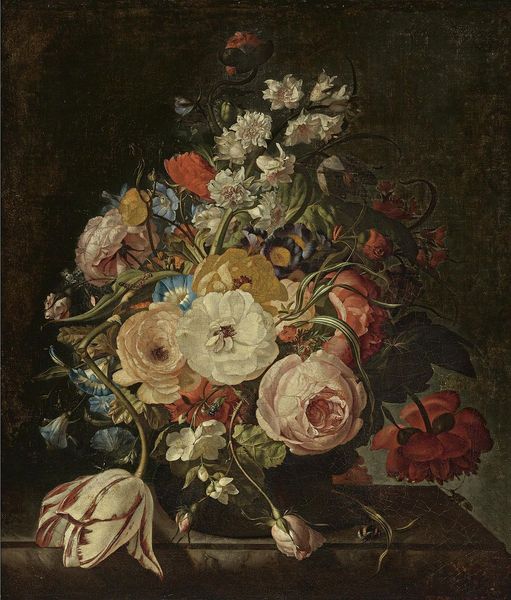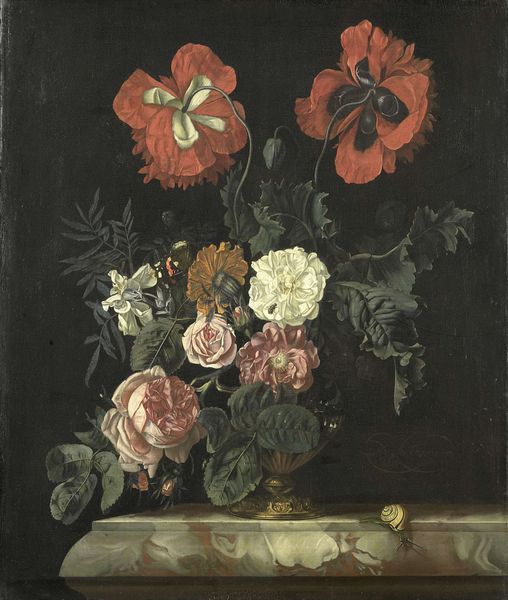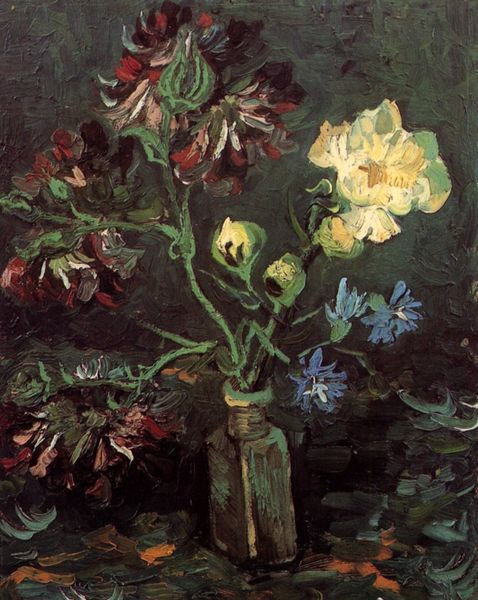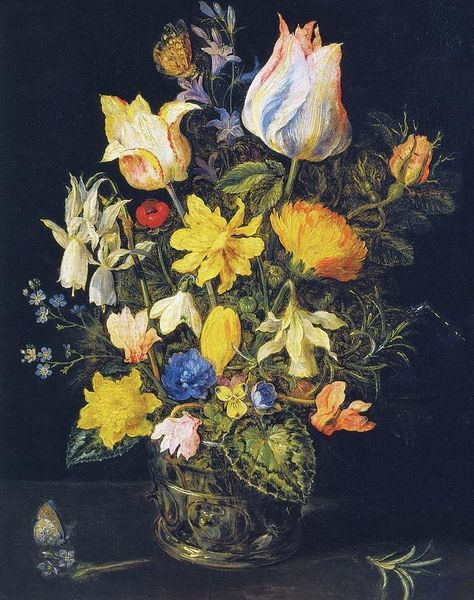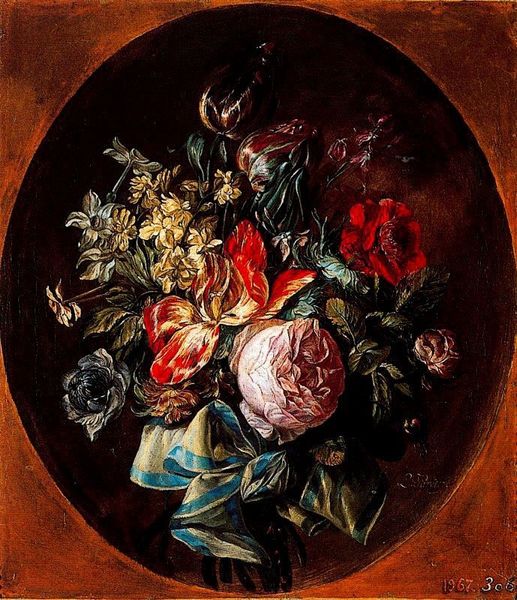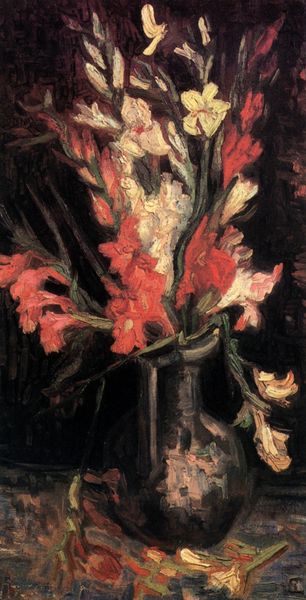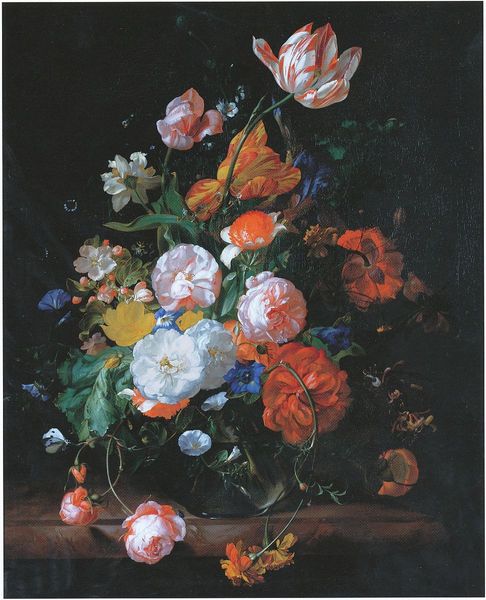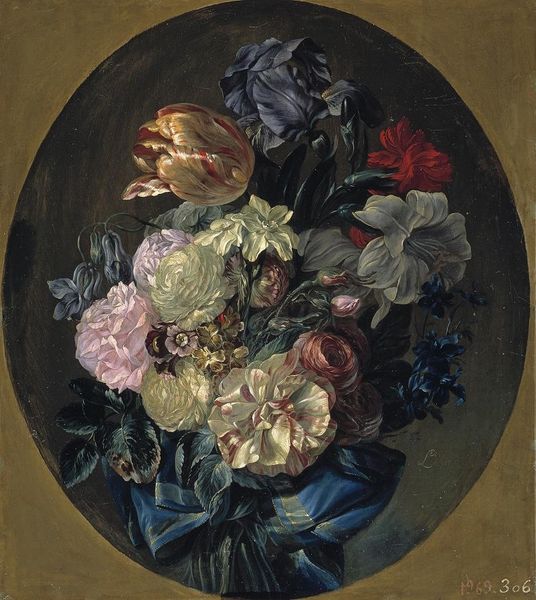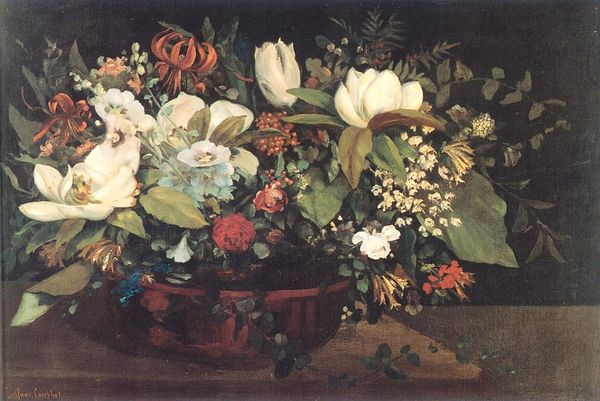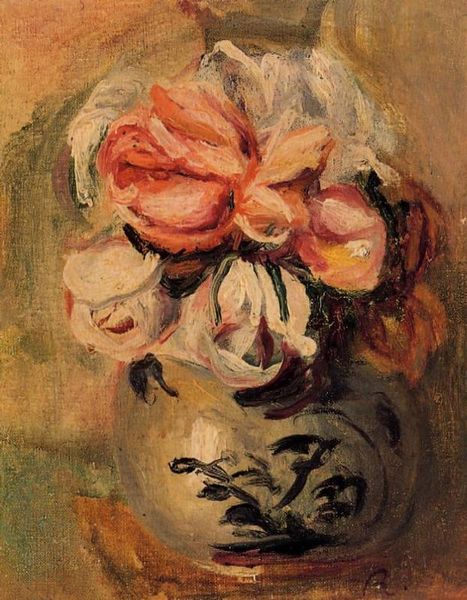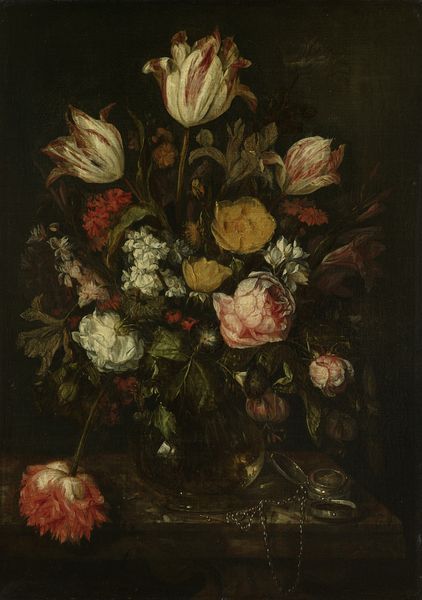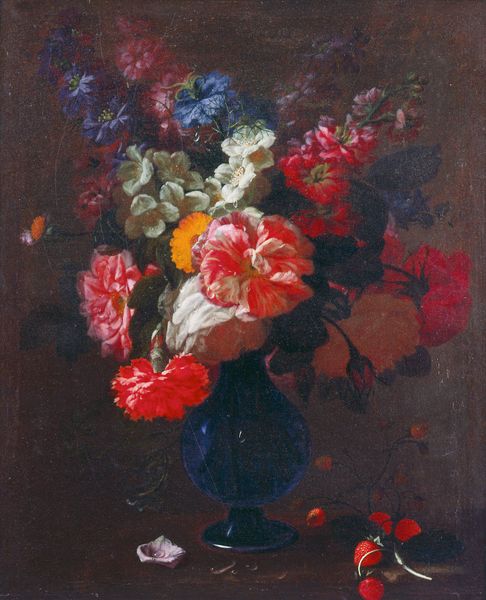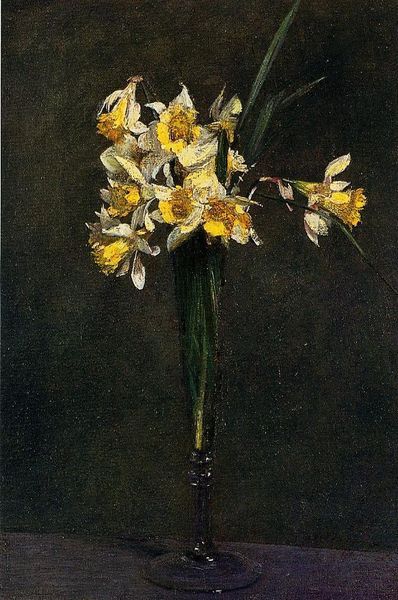
Copyright: Public Domain: Artvee
Curator: Ah, “Vase mit Blumen,” or “Vase with Flowers,” a work by Franz von Lenbach, created around 1865. Painted with oil on canvas, its part of a private collection, offering a glimpse into Lenbach’s, shall we say, more intimate studies. Editor: It's striking! A little melancholic, perhaps? The dark, muted background really makes the blossoms pop, though there's also a sense of decay lurking beneath the vibrant colors. Curator: The piece, though, it’s rather indicative of the period, isn't it? The mid-19th century was awash with artists taking a step back from large scale public commissions towards more, private expressions of art. Lenbach, known primarily for his portraits of prominent figures, seems here to engage in a more solitary form of visual contemplation. This focus shift allowed the Romantics to delve more into emotion than document representation. Editor: The Romantic focus on the individual definitely comes through. Roses often stand for love and beauty, especially in that delicate pink, yet placed against the shadows, one gets a contrasting sense of brevity. Those almost indistinct outlines of the vase holding them—are they deliberate in suggesting impermanence? Curator: Well, flower paintings, particularly still lifes, frequently played a specific socio-economic function for the rising bourgeois class. Consider their reception setting – domestic spaces - how the act of collecting and exhibiting a floral painting transformed private residences into spaces ripe for cultivated and classed spectatorship. In this milieu, the still life did far more than "look pretty" or "invite quiet reflection", they actively performed functions relative to class aspirations, political positions and the validation of artistic talent. The way Lenbach presents them departs a bit from idealized arrangements one would commonly find gracing the walls of aristocratic parlors at the time. It’s arguably a less theatrical, perhaps a more genuine rendition. Editor: I appreciate your insights on the broader cultural impact. The arrangement, though simple, exudes such symbolic intensity: A central pink rose of love with a small opening bud of yellow hinting hope for a promising future contrasting a darker bud next to the pink rose. Then that startling vivid dash of pure royal blue--faithfulness, perhaps loyalty or honesty. What about that fiery, almost blood-red blossom – intense passion or perhaps a memento mori element amid all this ephemeral beauty? It strikes me, though, what do you see it communicating? Curator: That this intimate sketch does speak eloquently about its time through this language of symbols, its cultural role then remains very central to our viewing. Considering his well-documented ambitions and artistic output, a casual floral still-life it isn't, though! Editor: Right! Curator: Precisely, it certainly provokes thought regarding his wider art market performance back then. Thank you for unveiling the floral symbolism here; food for future thought indeed. Editor: And thank you for putting it in such a historical frame; that’s just the beginning of so many reflections.
Comments
No comments
Be the first to comment and join the conversation on the ultimate creative platform.
